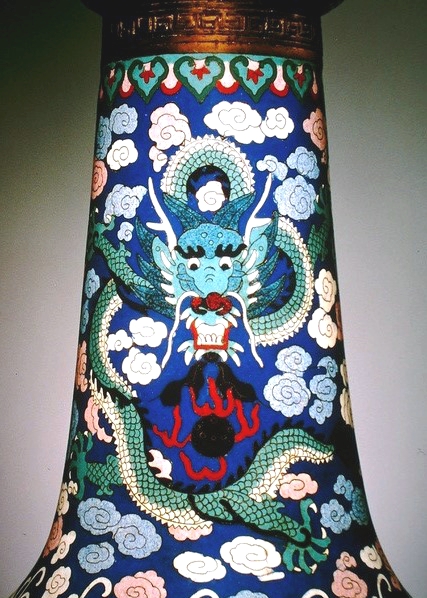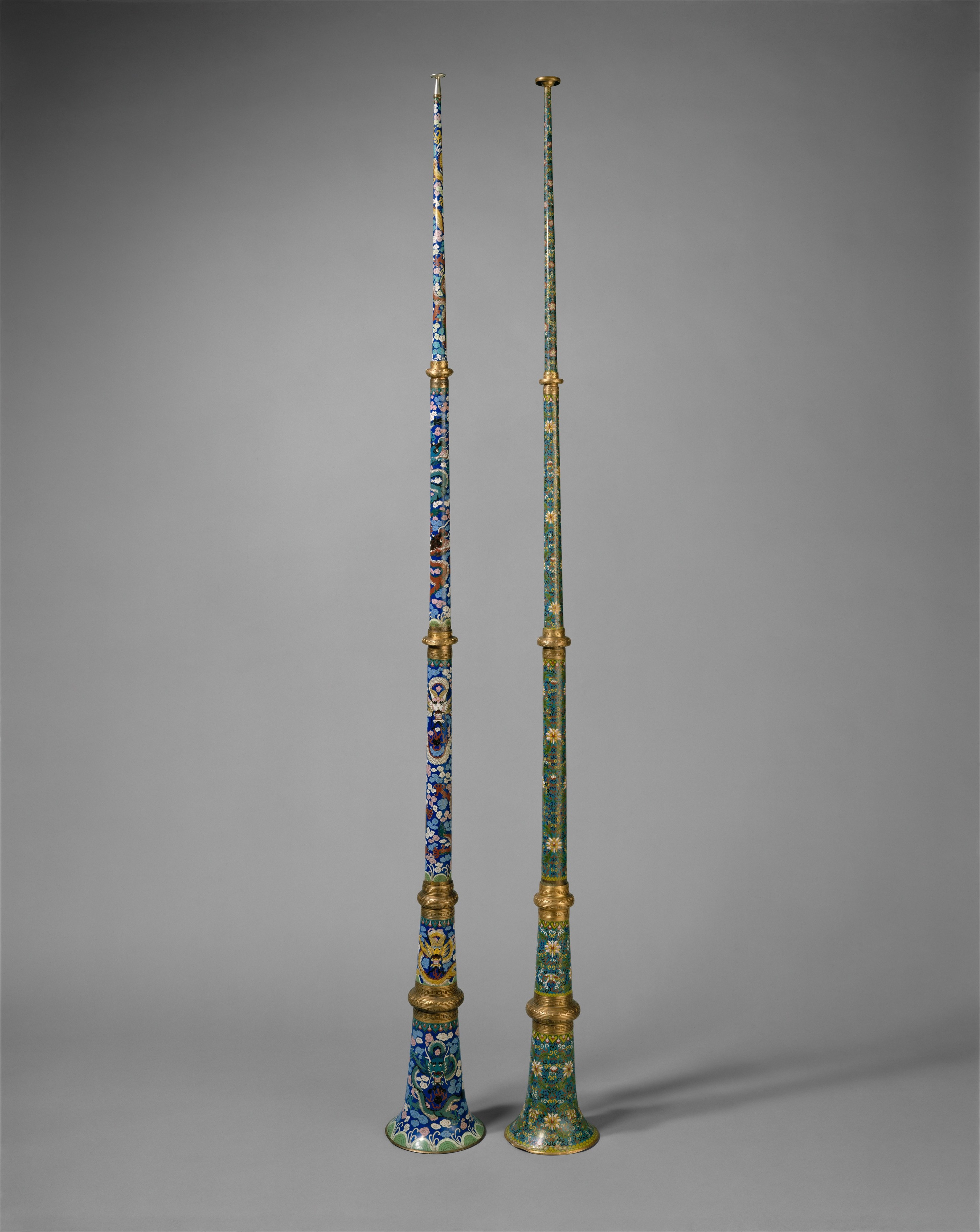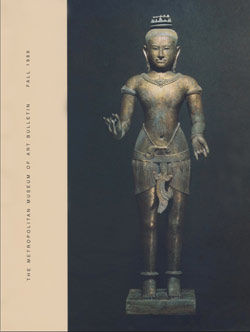Dung-Chen
Although Confucianism remained the basis for the structure of government in China, it was Buddhism, introduced in the first century B.C.E., which flourished from the Han to the Tang (206 B.C.E.–C.E. 907). Among the instruments associated with Buddhism was the dung-chen, a long trumpet played for preludes, processions, and morning and evening calls to prayer. It was unusual for musical instruments to be enameled; cloisonné was usually reserved for containers, such as boxes or vases. This Tibetan-style long trumpet was among the many instruments made in China and sent as gifts to impress officials of bordering nations. Gifts of musical instruments and the musicians who played them were common in east Asia. This political custom promoted the dissemination of musical ideas. The dung-chen, like many Asian trumpets, collapses for storage.
Due to rights restrictions, this image cannot be enlarged, viewed at full screen, or downloaded.
This artwork is meant to be viewed from right to left. Scroll left to view more.





